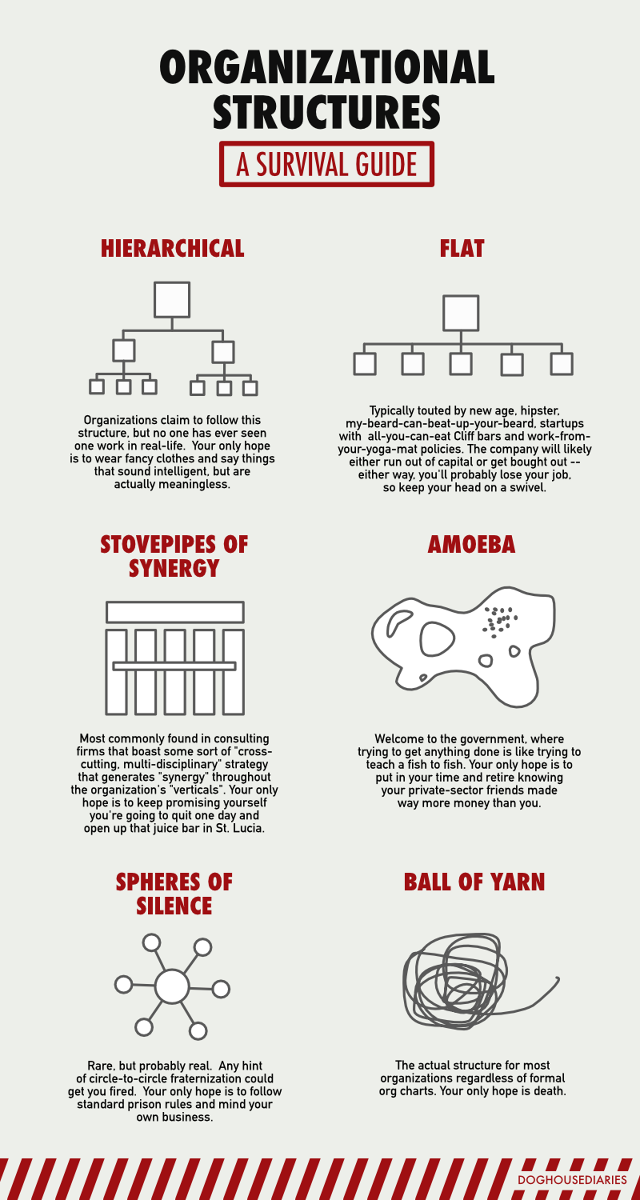Can't figure out your company's org chart? You're not alone: no one can, and attempting to do so is just wishful thinking. To translate what it means, the Doghouse Diaries has come up with a handy primer, breaking it all down. Here's what the six types of org charts really mean, and how to work your way up within them.

Hierarchical
"Organizations claim to follow this structure, but no one has ever seen one work in real-life," writes Doghouse Diaries. "Your only hope is to wear fancy clothes and say things that sound intelligent, but are actually meaningless."
Flat
"Typically touted by new age, hipster, my-beard-can-beat-up-your-beard, startups with all-you-can-eat Clif bars and work-from-your-yoga-mat policies," notes Doghouse Diaries. "The company will likely either run out of capital or get bought out — either way, you'll probably lose your job, so keep your head on a swivel."
Stovepipes of Synergy
"Most commonly found in consulting firms that boast some sort of 'cross cutting, multi-disciplinary strategy' that generates 'synergy' throughout the organization's 'verticals'. Your only hope is to keep promising yourself you're going to quit one day and open up that juice bar in St. Lucia."
Amoeba
"Welcome to the government!" quips Doghouse Diaries. "Where trying to get anything done is like trying to teach a fish to fish. Your only hope is to put in your time and retire knowing your private-sector friends made way more money than you."
Spheres Of Silence
"Rare, but probably real," says the Doghouse Diaries, describing the least friendly of companies' org charts. "Any hint of circle-to-circle fraternization could get you fired. Your only hope is to follow standard prison rules and mind your own business."
Ball Of Yarn
None of these seem familiar? There's a reason for that. "The actual structure of most organizations [is the ball of yarn], regardless of formal org charts," says Doghouse Diaries. "Your only hope is death."
Of course, there are some other org charts that Doghouse Diaries doesn't cover: for example, whatever Autodesk's crazy nuclear mutational org chart is called. But for most of us, these org charts are depressingly familiar indeed.